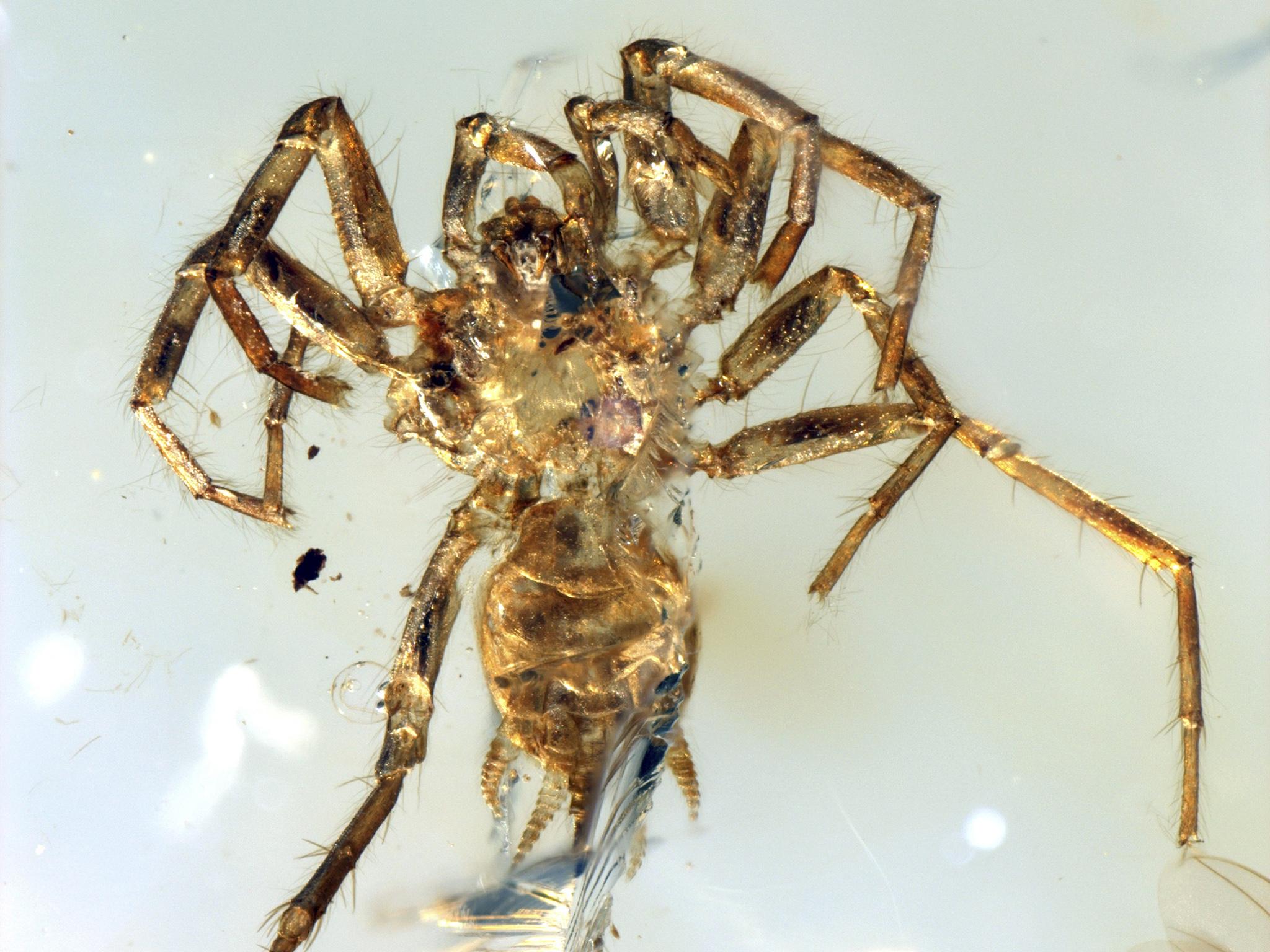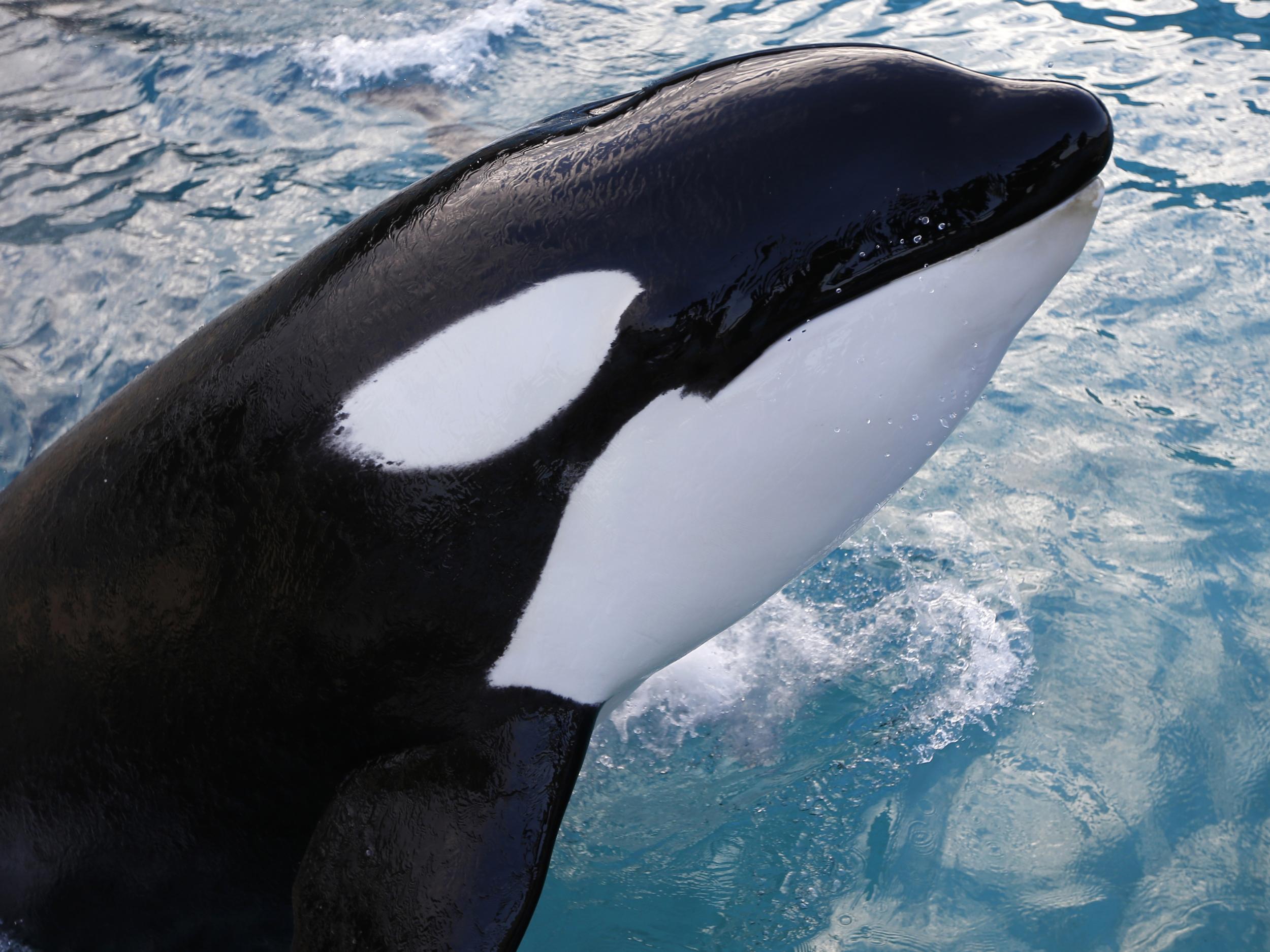Science news in brief: Plants may have consciousness and how to say hello to an orca
A round-up of science stories from around the world

Ancient spider-like creature with tail found trapped in amber
It’s the stuff of prehistoric nightmares. Eight legs. Fangs. And a whip-like tail.
Call it Chimerarachne yingi, a newly discovered arachnid that crawled around rain forests in what is now south-east Asia more than 100 million years ago during the Cretaceous period. Its remains were found imprisoned in amber, as if Mother Nature herself tried to lock this tiny terror away from the rest of the world.
Two separate teams of researchers discovered four specimens of the new species in the amber markets of Myanmar. Their findings were published in two separate papers in the journal Nature Ecology & Evolution.
“The material is stunning in the quality of its preservation,” says Greg Edgecombe, an invertebrate paleobiologist at the Natural History Museum in London, who was not involved in the study. “It throws up a combination of characters that initially seems alien to an arachnologist.”
C yingi is not a spider, but rather a relative that lived alongside ancient spiders for millions of years. Its discovery provides insight into the evolutionary history of the creepy crawlers that have spun webs around the planet.
Similar to today’s black widows and huntsman spiders, C yingi had silk-producing spinnerets near its rear end. The males of this species also had two modified appendages called pedipalps near their heads that were used like syringes to deliver sperm to females. But unlike today’s spiders, C yingi had a long tail, like those seen in whip-scorpions or vinegarroons.
“Take the front of a spider, the end of a vinegarroon and then you put spinnerets on it and that’s our fossil,” says Gonzalo Giribet, an invertebrate biologist from Harvard University and an author on one of the papers.
Though the arachnid was quite small, only about 2.5mm long, it had a tail nearly twice its body size. The tail, or telson, was most likely a sensory organ rather than an acid-flinging weapon as seen in whip scorpions.
“It’s like an antenna on the back end,” says Paul Selden, a paleontologist at the University of Kansas and an author of the second study.
Sedate a plant and it seems to lose consciousness – so is it conscious?
Under poor soil conditions, the pea seems to be able to assess risk. The sensitive plant can make memories and learn to stop recoiling if you mess with it enough. The Venus fly trap appears to count when insects trigger its trap.
Now, a study published recently in Annals of Botany has shown that plants can be frozen in place with a range of anaesthetics, including the types that are used when you undergo surgery.
Insights gleaned from the study may help doctors better understand the variety of anaesthetics used in surgeries. But the research also highlights that plants are complex organisms, perhaps less different from animals than is often assumed.
“Plants are not just robotic, stimulus-response devices,” says Frantisek Baluska, a plant cell biologist at the University of Bonn in Germany and co-author of the study. “They’re living organisms which have their own problems, maybe something like with humans feeling pain or joy.
“In order to navigate this complex life, they must have some compass.”
Plants sometimes use that compass to deal with stress, competition or development. They take in information from their environment and produce their own anaesthetics like menthol, ethanol and cocaine, similar to how humans release chemicals that dull pain during trauma. These may act within the plant itself or float off in the air to affect neighbouring plants.
Our anaesthetics work on plants, too, the study confirmed, although what exactly they’re working on is unclear.
The researchers trapped pea plants in glass chambers with ether, soaked roots of the sensitive plant and seedlings of garden cress in lidocaine and even measured the electrical activity of a Venus fly trap’s cells. An hour or so later, the plants became unresponsive. The seedlings stayed dormant. And the Venus fly trap didn’t react to a stimulus similar to a bug crawling across its maw. Its cells stopped firing.
When the dope wore off, the plants returned to life. It’s all so animal-like.
“How organisms are perceiving the environment or responding or adapting are based on some very similar principles,” Baluska says.
How to get a killer whale to say hello

Have you ever wanted to talk to a killer whale? First, you should introduce yourself by saying “hello”. You might be surprised by what the whale says back.
In a paper published in Proceedings of the Royal Society B, scientists report that a 16-year-old orca named Wikie was able to copy a variety of new sounds on command. The study joins a growing body of research illustrating the deep importance of social learning for killer whales.
“We wanted to study vocal imitation because it’s a hallmark of human spoken language, which is in turn important for human cultural evolution,” says Jose Zamorano-Abramson, who led the study as a postdoctoral researcher at the Pontifical Catholic University of Chile. “We are interested in the possibility that other species also have cultural processes.”
In the wild, killer whales live in tight-knit, matriarchal pods with unique vocal traditions. For decades, scientists have suspected that orcas acquire these dialects through social learning rather than genetic inheritance.
This study provides “gold-standard, controlled experimental evidence” that orcas can learn fresh sounds through imitation, says Luke Rendell, a cetacean and social learning researcher at the University of St Andrews in Scotland who was not involved in the work.
The research was conducted at the Marineland Aquarium in Antibes, France. After the release of the documentary Blackfish, the keeping of killer whales in captivity has come under increasing scrutiny, and the park has faced criticism following deaths of some of its orcas.
Abramson agrees that new killer whales should not be captured, but notes that those already in captivity would not fare well in the wild.
For their study, Abramson and colleagues trained Wikie’s calf, Moana, to make five sounds outside of Wikie’s natural repertoire, including that of a creaking door, an elephant and a raspberry. Then they instructed Wikie to copy each vocalisation, either by listening to Moana directly or through speakers. They also tested whether Wikie could emulate six human words or phrases.
The researchers first asked human listeners to judge whether Wikie’s calls matched the ones she was asked to parrot. Then they used an algorithm to evaluate her vocalisations.
Both human and machine methods deemed Wikie successful at learning the novel sounds presented to her, including those uttered by humans.
A suitcase-size satellite’s big image of frozen Earth below

About two weeks ago, a satellite called Iceye-X1 hitched a ride into orbit aboard an Indian rocket. It’s about the size of a suitcase and has already sent its first picture, constructed out of microwave radar reflections, back to Earth.
“I personally love this image,” says Rafal Modrzewski, chief executive of Iceye, a Finnish startup that built and operates the satellite, referring to a scene from the Noatak National Preserve in Alaska. “It’s full of snow, but it’s so much more complex than you think at first.”
The swath of the park visible in the first image is 1.2 gigabytes of data that encompasses an area about 50 miles long by 25 miles wide. It was made using a technology known as synthetic aperture radar, or SAR.
The capability of Iceye-X1 is not by itself groundbreaking. Edward R Caro, who worked for decades on spaceborne radar instruments at Nasa’s Jet Propulsion Laboratory in Pasadena, California, says it is roughly comparable in performance to what he and his colleagues put on Nasa’s 5,000-pound Seasat satellite early in his career. “It would be analogous to what we were flying in 1978,” he says.
But Iceye-X1, which weighs less than 220 pounds, takes advantage of the miniaturisation of modern consumer electronics, largely using off-the-shelf components, and the cheaper rides to space now available.
The price for the first satellite was in the “single digits in millions,” Modrzewski says. A more traditional radar satellite would cost a hundred times more, he adds.
The SAR technique takes advantage of the fact that the instrument is moving over the surface of the planet. The echoes of multiple pulses are combined to achieve what would be observed by one pulse from a larger radar antenna.
Iceye-X1 has limitations. The satellite’s instrument can take only two snapshots every hour and a half; it spends the rest of the time recharging its batteries. It also sends just one wavelength of radar pulses.
Modrzewski says his company is already developing more capable successors – each one is designed to last only about three years – and a constellation of small satellites could provide world coverage.
Unlocking secrets of sour flavours with something found in your ears
Of the five tastes – sweet, salty, sour, bitter and umami – sour is one of the most mysterious. Bite into a piece of lemon and your brain gets a message that something sour has arrived.
But unlike sweet and bitter, for example, for which biologists have identified proteins on the tongue’s taste cells that detect the molecules involved, the sourness of acids like lemon juice and vinegar has remained enigmatic. Now, however, in a paper published in Science, researchers report they have found a protein in mouse taste cells that is likely a key player in the detection of sour flavours.
There’s just one strange thing, though: Biologists have known about this protein for years. It was previously identified in the inner ear, or vestibular system, of mice, humans and many other creatures, where it is required for developing a sense of balance.
The results suggest a fascinating truth about evolution: the first place something is discovered may not be the last place it turns up. If it has proved advantageous over the aeons, a protein whose purpose we thought we understood may have a rich private life of its own elsewhere in the body, just waiting to be found.
Emily Liman of the University of Southern California, who led the study, and colleagues had made a list of all the genes expressed in sour taste cells and identified those that might make cells sensitive to acids. They had tested about 40 before they came to one called Otop1.
Otop1 worked like a charm. “It was a huge, huge surprise for us,” she says.
It isn’t yet clear why Otop1 would be useful in both the ear and the tongue. But the overlap makes a kind of sense. The ability to balance depends on the formation of tiny crystals of calcium carbonate in the inner ear. They rest on top of sensitive hair cells and shift gently as we move, giving feedback that lets us stay upright.
Those crystals will dissolve, however, if they are placed in an acid. Perhaps Otop1’s ability to make cells sensitive to acids is important in the process of creating these crucial structures.
Reporting by Nicholas St Fleur, Joanna Klein, Steph Yin, Kenneth Chang and Veronique Greenwood
© New York Times
Join our commenting forum
Join thought-provoking conversations, follow other Independent readers and see their replies
Comments